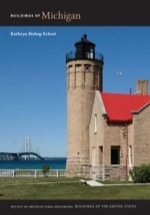
The Capitol Theater and its arcade of offices and stores were designed in a fantasy of the “Hispano-Italian style of the 15th century,” according to a contemporary description. The Flint Building Corporation and Walter S. Butterfield, owner and developer of a string of what were by then seventy-five Michigan theaters, organized as the Capitol Building Company. Their purpose was to erect cooperatively this block-long building. Noted theater designer Eberson of Chicago, who originated the “atmospheric” theater, drafted plans for the building. The interior of the Capitol Theater was created to give the audience the impression of being seated in an Italian patio. It contains facades of palaces, towers of castles, and a facsimile of an old Italian cathedral window. Beneath its domed sky-blue ceiling twinkling with stars and vibrant with moving fleecy white clouds, the theater seats 2,000. In this luxurious setting Flint theatergoers enjoyed stage and screen entertainment. The exterior of the two- and three-story theater block is clad with light yellowish-brown brick and encrusted with terra-cotta piers, colonnettes, and roofline crestings. Henry L. VanDerHorst of Kalamazoo was the general contractor for the building.

